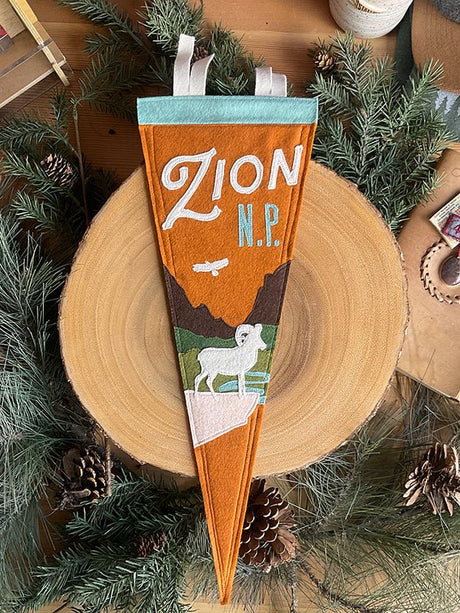October is a magical time in America’s national parks and public lands. As the vibrant colors of fall foliage sweep across the landscape, wildlife becomes more active in preparation for the approaching winter. Whether you're hiking through a forest, exploring a national wildlife refuge, or simply driving through a scenic byway, October offers plenty of opportunities for incredible wildlife sightings. From elk bugling in the Rockies to migratory birds filling the sky, this is the perfect time to catch some of nature’s most fascinating spectacles.
Here’s what you can expect to spot in the fall, and a few tips to maximize your wildlife spotting experience:
1. Elk Rut: The Majestic Bugle

October marks the height of elk mating season, also known as the rut. This is a prime time to witness the awe-inspiring sight of bull elk battling for dominance, as they gather harems of females. The iconic sound of their eerie bugle calls echoes through valleys, especially in parks like Rocky Mountain National Park (Colorado) and Yellowstone (Wyoming). You may see the bulls sparring with antlers and engaging in dramatic displays to establish territory.
Where to Spot:
- Rocky Mountain National Park, CO
- Great Smoky Mountains National Park, NC/TN
- Yellowstone National Park, WY/MT/ID
Pro Tip: Sunrise and sunset are the best times to catch elk in action. Stay a respectful distance away, as elk can be unpredictable and aggressive during this time of year.
2. Bear Preparations for Hibernation

In October, bears are in the midst of a feeding frenzy called hyperphagia—they eat as much as possible to build up fat for their winter hibernation. This makes them highly active and often visible in national parks. Grizzly and black bears can be seen foraging for berries, nuts, and fish near rivers and dense forests. In coastal areas like Katmai National Park in Alaska, you may still catch the tail end of bears feeding on salmon.
Where to Spot:
- Great Smoky Mountains National Park, NC/TN
- Glacier National Park, MT
- Katmai National Park, AK
Pro Tip: Always keep a safe distance from bears, ideally using binoculars or telephoto lenses. If you're hiking, make noise to avoid surprising them, and carry bear spray in bear country.
3. Bird Migration: A Sky Full of Wings

October is prime time for bird migration. Millions of birds embark on long journeys south, offering birdwatchers an excellent opportunity to spot a wide variety of species. Look for raptors like hawks and eagles soaring overhead, or large flocks of geese and sandhill cranes flying in iconic V-formations. Wetlands and open fields are hotspots for migratory waterfowl, and lucky observers may even spot rare species passing through.
Where to Spot:
- Bosque del Apache National Wildlife Refuge, NM (for sandhill cranes)
- Hawk Mountain Sanctuary, PA (for raptor migrations)
- Horicon Marsh, WI (for migratory waterfowl)
Pro Tip: Bring binoculars or a spotting scope for a better view, and visit bird refuges in the early morning or late afternoon when activity is highest.
4. Bighorn Sheep: Scaling the Cliffs

Bighorn sheep, known for their thick, curved horns, become more visible during fall as they prepare for their own mating season. You’ll often see these incredible animals in steep, rocky areas, navigating seemingly impossible terrain with ease. In October, the males (rams) are also more active, clashing horns with each other in impressive displays of power.
Where to Spot:
- Zion National Park, UT
- Badlands National Park, SD
- Glacier National Park, MT
Pro Tip: Spotting bighorn sheep is best in the early morning or late afternoon. Look for them in high, rugged terrain, especially near cliffs and rocky slopes.
5. Moose: Giants of the Forest

Fall is also a great time to see moose, especially in the colder, northern regions. These solitary animals are often seen foraging in marshes, lakes, or along rivers. October is mating season for moose as well, so keep an eye out for bulls with large, impressive antlers.
Where to Spot:
- Grand Teton National Park, WY
- Isle Royale National Park, MI
- Denali National Park, AK
Pro Tip: Moose are most active around dawn and dusk. Since they are generally solitary, scanning the edges of wetlands and forests will give you the best chance of spotting them.
Maximizing Your Wildlife Viewing Experience
October is a fantastic time for wildlife spotting, but it’s essential to follow a few key practices to make the most of your adventure while keeping both yourself and the animals safe:
- Pack Binoculars: Wildlife is often best observed from a distance.
- Dress in Layers: Fall weather can change rapidly. Be prepared for cold mornings and warmer afternoons.
- Practice Patience: Wildlife doesn’t always follow a schedule, so take your time and enjoy the serenity of nature while waiting for a sighting.
- Respect Wildlife: Keep a safe distance, never feed animals, and be mindful of your surroundings to avoid disturbing their natural behavior.
- Visit Early or Late: Dawn and dusk are typically the most active times for animals, so plan your outings accordingly.
October offers the chance to witness some of the most exciting natural behaviors as wildlife prepares for the winter ahead. Whether you're an experienced birder, a casual










